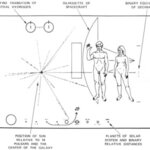Technology

Virtually limitless sources of energy are everywhere. One such potential source is energy from ocean waves that could be used to generate electric power. Yet as engineers test new technologies for capturing it, the devices are plagued by battering storms, limited efficiency, and the need to be tethered to the seafloor.
Currently, a team of aerospace engineers is attempting to address these setbacks by applying the principles that keep airplanes aloft to create a new wave-energy system that is durable, extremely efficient, and can be placed anywhere in the ocean, regardless of depth.…
Robotic Surrogate Takes Your Place at Work
Having one of those days where even a hearty bowl of Fruit Loops and Jack Daniels can't get you out of bed? A telepresence robot can come into the office for you, elevating telecommuting to a decidedly new level. The somewhat humanoid 'bots, produced by Mountain View, California-based Anybots, are controlled via video-game-like controls from your laptop, allowing you to be "present" without actually being in the office.
The robots are equipped with a screen displaying your smiling mug to your co-workers, as well as a camera that beams a…
Soccer-Ball-Sized Submersible Robots Will Track Ocean Currents and Disasters at Sea
The National Science Foundation has awarded almost $1 million to develop a swarm of underwater robotic explorers.
Hundreds of soccer-ball-sized robot drones could soon ply the friendly waves to help scientists track ocean currents and harmful algae blooms, or even swarm to disaster sites such as oil spills and airplane crashes. That's no mere flight of fancy, now that the National Science Foundation has provided almost $1 million in funding to researchers at the Scripps Institution of Oceanography…
The Wall Street Journal has a piece on Tinkering Makes a Comeback Amid Crisis. They are talking about what is referred to by varied terms such as Do-It-Yourself (DIY), the Make movement, and simply Crafting. The concept is 'build cool stuff, like machines and lasers and robots."
Making strange machines is a frontier tradition. Heck, it's a mad scientist tradition! The launch of Make magazine in 2005 gave the movement some legitimacy, and now this WSJ article gives us mainstream cred.
In my informal assessment, there seem to be four schools of makers:
Inventors: Prototype a…

There have been many discussions relating to transhumanism and augmenting intelligence as well as just intelligence itself. However, at the heart of many of these discussions the subject of Artificial Intalligence (AI) emerges. This raises the question of whether AI is possible and what it actually means.
There is no question that machines can be built to perform many intelligent-like acts and simulate human intelligence, but I would argue that there is a fundamental difference that isn't often mentioned.
A machine that can replicate human intelligence can never display…
Simulating the brain with traditional chips would require impractical megawatts of power. One scientist has an alternative.
According to Kwabena Boahen, a computer scientist at Stanford University, a robot with a processor as smart as the human brain would require at least 10 megawatts to operate. That's the amount of energy produced by a small hydroelectric plant. But a small group of computer scientists may have hit on a new neural supercomputer that could someday emulate the human brain's low energy requirements of just 20 watts -- barely enough to run a dim light bulb.
Discover Magazine…
Not since RoboCop has being a cyborg seemed so very cool. University of Chicago geoscientists are developing an artificial intelligence system that future Mars explorers could incorporate into their spacesuits to help them recognize signs of life on Mars' barren surface.The systems would entail an AI system known as a Hopfield neural network that uses processes closely mimicking human thought to weigh evidence and make decisions based on previously known facts and patterns. Using digital eyes incorporated into astronauts' suits, the AI system would collect data from the environment and…
MIT researchers and designers are developing the Affective Intelligent Driving Agent (AIDA) - a new in-car personal robot that aims to change the way we interact with our car. The project is a collaboration between the Personal Robots Group at the MIT Media Lab, MIT’s SENSEable City Lab and the Volkswagen Group of America’s Electronics Research Lab.
“With the ubiquity of sensors and mobile computers, information about our surroundings is ever abundant. AIDA embodies a new effort to make sense of these great amounts of data, harnessing our personal electronic devices as tools for behavioral…

When you use popular search engines like Google or Yahoo to find something on the internet, the information you input is collected and built into a profile that helps those companies market products you may find interesting. Your favorite search engines justify this practice by claiming that it allows them to learn about your interests and offer more efficient responses as a result.
That's well and good if you don't care about privacy. But if you do, a team of researchers has developed a new protocol based on cryptographic tools to distort the user profile generated by internet search…

A photograph of John F. Kennedy assassin Lee Harvey Oswald holding a rifle and a copy of The Militant communist paper in 1963 is authentic, says Dartmouth Computer Scientist Hany Farid, a pioneer in the field of digital forensics, who digitally analyzed the iconic image of Oswald pictured in a backyard a few months before the assassination.
Oswald and various conspiracy theorists claimed that the incriminating photo was a fake, stating the lighting and shadows were inconsistent, but after analyzing the photo with modern-day forensic tools, Farid says the photo almost certainly was not…